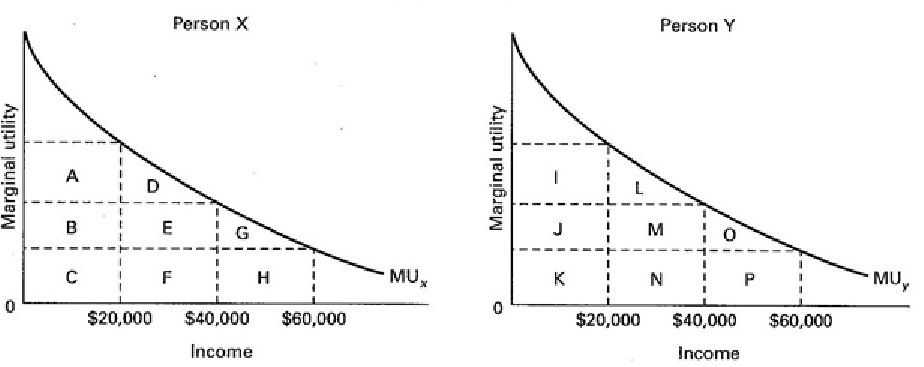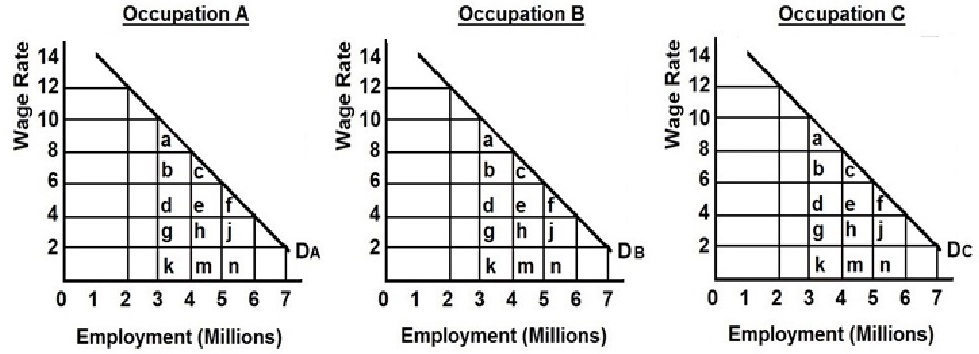|
The Case for Equality Model
of Income Distribution
(The 5Es - President Example)
(The Utility Maximizing Distribution of Income)

MULTIPLE CHOICE: Refer to the above
diagrams which show identical marginal utility curves for
Person X and Person Y. Assume a given income of $80,000 is
initially distributed so that Person X receives $60,000 and
Person Y $20,000.
1. The marginal utility:
1. of the last dollar
will be greater for Person Y than for Person X
2. derived from the last dollar will not be comparable
between the two income receivers
3. of the last dollar will be the same for both Person X
and Person Y
4. of the last dollar will be greater for Person X than
for Person Y
2. Which is true about redistributing
the income?
1. no judgement can be
made as to the effect of a redistribution on total
utility
2. this initial distribution of income is maximizing the
combined total utility of the two consumers
3. the combined total utility of the two consumers can be
increased by redistributing income from Person Y to
Person X
4. the combined total utility of the two consumers can be
increased by redistributing income from Person X to
Person Y
3. If this income is redistributed
equally then the total combined utility will:
1. increase by DEFGH
minus LMNOP
2. increase by LMNOP minus DEFGH
3. increase by LMN minus GH
4. increase by GH minus LMN
5. decrease by GH
Occupational Discrimination
Model

ASSUMPTIONS:
(1) the labor force is
comprised of 6 million men and 6 million women workers;
(2) the economy has 3 occupations,
A, B, and C, each having identical demand curves for
labor;
(3) men and women workers are
homogeneous with respect to their labor-market
capabilities;
(4) women are discriminated
against by being excluded from occupations A and B and
are confined to C; and
(5) aside from discrimination, the
product and labor markets are competitive, therefore D =
MRP = VMP = P x MP
QUESTION: Refer to the above diagram
and list of assumptions. If discrimination is ended what
happens to output?
|